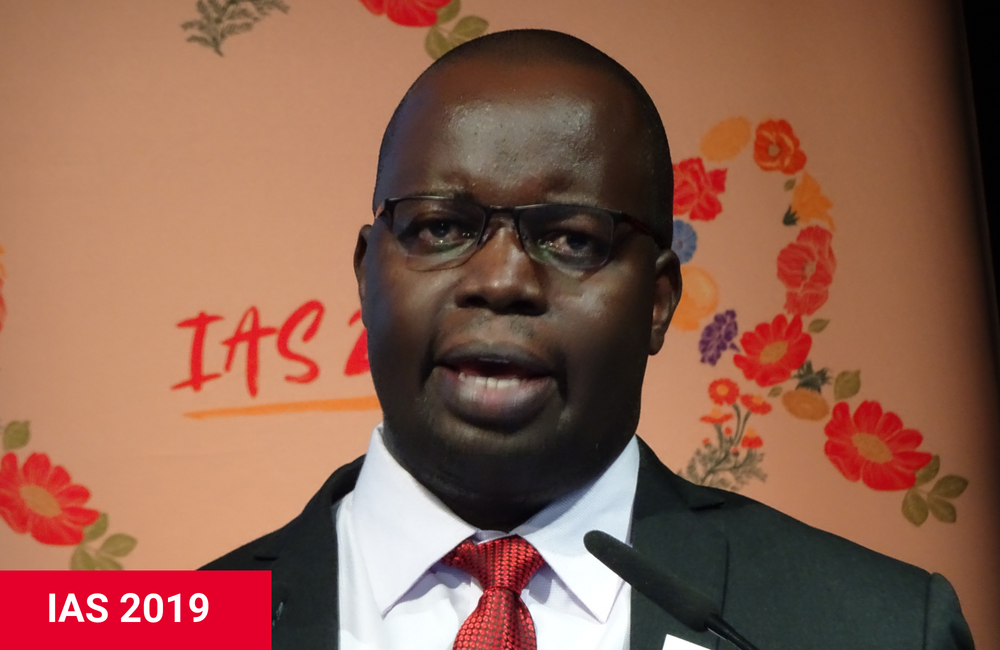
Stigma remains a significant barrier to the uptake and continued use of pre-exposure prophylaxis (PrEP) by key populations in Kenya, according to qualitative research presented at the 10th International AIDS Society Conference on HIV Science (IAS 2019) in Mexico City by Dr Daniel Were of the Jilinde Project and Jhpiego.
Adolescent girls and young women, men who have sex with men (MSM) and female sex workers continue to experience high levels of external as well as internalised stigma, he said. While stigma manifested differently for different key populations, the resultant effect was decreased PrEP uptake and continuation.
Kenya began increasing PrEP roll-out in May 2017, but uptake has been slower than expected, especially for groups such as adolescent girls and young women, and overall uptake rates remain low. Jilinde is a four-year project that aims to demonstrate and document an effective model for PrEP scale-up with key populations in Kenya and provides PrEP to these populations at 93 sites around the country.
In order to better understand how stigma presents a barrier to PrEP uptake and continuation, 22 focus groups and 30 in-depth interviews were conducted with 222 participants. The largest group were adolescent girls and young women (38%), followed by MSM (16%) and female sex workers (12%). Healthcare providers, peer educators, parents and male partners of adolescent girls and young women were also included.
Three main types of stigma emerged:
- Product stigma: “I have kept it a secret because the bottle is similar to that of ARVs. Someone who doesn’t know about PrEP could think you have HIV.” – 20-year-old young woman.
- Identity stigma: “MSM is seen as something bad, they take it as a curse…” – 20-year-old MSM. This form of stigma was mainly cited by MSM and sex workers.
- Behaviour stigma: “My mother told me I have taken those drugs because I want to be a prostitute…” 22-year-old young woman. This was mainly cited by adolescent girls and young women.
These forms of stigma emerged from various sources within the community including peers, sexual partners, family members and healthcare providers. Stigma was expressed as prejudice, discrimination, stereotypes and labelling regarding the ‘type’ of people who took PrEP. People using PrEP were labelled as promiscuous and subjected to similar stigma to that of being HIV positive. Some healthcare providers equated giving PrEP to key populations as a means of promoting immorality.
Participants spoke about the real-life implications of stigma. Outcomes included intimate partner violence, loss of business (for sex workers), reputational damage and healthcare provider discrimination:
“I had this client who came to my place and my bottle of PrEP was on top of a table. Once he saw this, he dressed up and left the room…” – 24-year-old female sex worker.
This often resulted in a discontinuation of PrEP due to the high levels of social stigma directed at people using PrEP:
“What made me to stop taking PrEP was my two friends who said that I was HIV positive…” – 22-year-old female sex worker.
South Africa and Zimbabwe
In a symposium, Ntando Yola, community engagement lead of the Desmond Tutu HIV Foundation, provided some insights into the community uptake of PrEP in settings such as South Africa, outlining some of the barriers as well as possible facilitators of PrEP uptake, especially for adolescents and young people.
Research with young people in South Africa reveals that one size does not fit all and that integrated (especially with contraception), adolescent-friendly services that are convenient to use are key. Community education and adolescent-specific messaging should form the foundation for the roll-out of PrEP in younger, vulnerable populations.
“I want short waiting times: PrEP should be a pickup just like I pick up condoms; and I can call you when I want more information…”
“I want PrEP integrated into other activities I am already doing, or something that friends can do together…”
Yola also cited lessons learned from the HPTN 082 demonstration study with adolescent girls and young women in South Africa and Zimbabwe. Youth-friendly print media, videos, community consultations and other engagement activities may have contributed to a very high PrEP uptake of 95%.
“Informing, consulting, collaborating, and empowering adolescent girls and young women, primary care givers, and communities contributed to high recruitment and retention of adolescent girls and young women, who had increased awareness and motivation to use oral Truvada as PrEP,” he said.
Conclusion
While stigma remains a significant barrier to accessing PrEP in sub-Saharan Africa, and unique challenges remain, there are also promising results in some settings indicating that PrEP uptake can be higher with greater community engagement and tailored strategies.
Both presenters emphasised prioritising tailored interventions that include sensitivity training for healthcare providers and raising awareness of PrEP in efforts to normalise and destigmatise it. A greater focus on integration of PrEP with other health services would offer an opportunity to do this, while also providing a more effective service delivery model.
Were D et al. Manifestations of stigma in the context of a national oral pre-exposure prophylaxis (PrEP) scale-up program in Kenya. 10th International AIDS Society Conference on HIV Science, Mexico City, abstract MOAD0302, 2019.
View the abstract on the conference website.
Yola N Considerations for community messaging about HIV testing in the context of PrEP. 10th International AIDS Society Conference on HIV Science, Mexico City, presentation TUSY0204, 2019.
View details of this session on the conference website (including links to slides).
